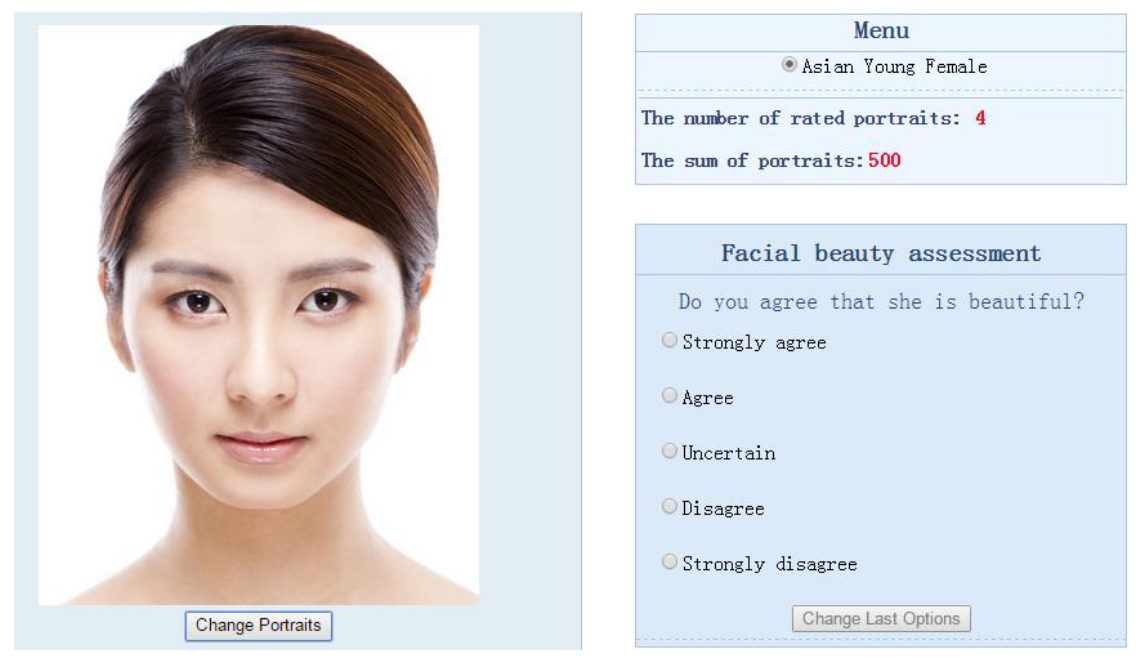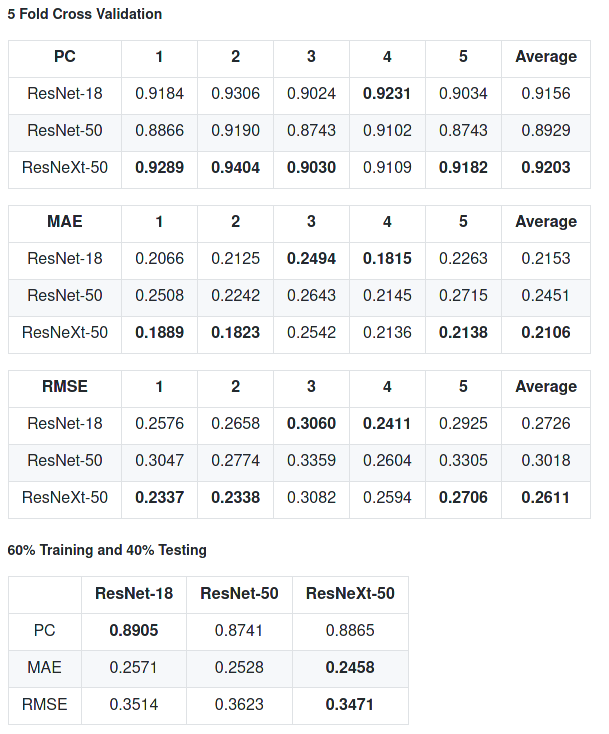Introduction
This article introduce the method of scoring facial beauty using deep learning
Database
The dataset is SCUT-FBP5500, it has totally 5500 frontal faces. The SCUT-FBP5500 Dataset can be divided into four subsets with different races and gender, including 2000 Asian females(AF), 2000 Asian males(AM), 750 Caucasian females(CF) and 750 Caucasian males(CM).

All the images are labeled with beauty scores ranging from [1, 5] by totally 60 volunteers.

For more detail you can see the SCUT-FBP: A Benchmark Datasetfor Facial Beauty Perception paper.
Training and Testing Set Split
We use two kinds of experimental settings to evaluate the facial beauty prediction methods on SCUT-FBP5500 benchmark, which includes:
- 5-folds cross validation. For each validation, 80% samples (4400 images) are used for training and the rest (1100 images) are used for testing.
- The split of 60% training and 40% testing. 60% samples (3300 images) are used for training and the rest (2200 images) are used for testing.
Benchmark Evaluation
We set ResNet-18, ResNet-50 and ResNeXt-50 as the benchmarks of the SCUT-FBP5500 dataset, and we evaluate the benchmark on various measurement metrics, including: Pearson correlation (PC), maximum absolute error (MAE), and root mean square error (RMSE).

Training Tutorials and Models
Install
Create new Google Colab notebook, pull repo and install dependencies
%cd /content
!git clone https://github.com/etrain-xyz/facial-beauty-prediction.git
%cd /content/facial-beauty-prediction
!pip install -r requirements.txt
Download the SCUT-FBP5500 dataset and unzip.
!pip install gdown
!gdown https://drive.google.com/uc?id=1w0TorBfTIqbquQVd6k3h_77ypnrvfGwf
!unzip -q 'SCUT-FBP5500_v2.1.zip'
We will train with resnet18, you can see model.py file for more detail.
#config.py
import torch
import torchvision.transforms as transforms
model_arch = 'resnet18'
epochs = 50
if torch.cuda.is_available():
device = 'cuda:0'
else:
device = 'cpu'
transform = transforms.Compose([
transforms.Resize(256),
transforms.CenterCrop(224),
transforms.ToTensor(),
transforms.Normalize(mean=[0.485, 0.456, 0.406], std=[0.229, 0.224, 0.225]),])
data_root = './SCUT-FBP5500_v2'
models_dir = './models'
Training
Training by 60% training and 40% testing.
#train.py
...
if __name__ == '__main__':
# The split of 60% training and 40% testing
train_dir = os.path.join(config.data_root, 'train_test_files/split_of_60%training and 40%testing/train.txt')
val_dir = os.path.join(config.data_root, 'train_test_files/split_of_60%training and 40%testing/test.txt')
saved_path = os.path.join(config.models_dir, config.model_arch+'_best_state.pt')
train(train_dir, val_dir, model_saved_path=saved_path)
Training
!mkdir /content/facial-beauty-prediction/models
!python train.py
Testing
Download the 5_face_landmarks of dlib and unzip.
%cd /content/facial-beauty-prediction/models
!wget http://dlib.net/files/shape_predictor_5_face_landmarks.dat.bz2
!bzip2 -d shape_predictor_5_face_landmarks.dat.bz2
Run predict
%cd /content/facial-beauty-prediction/
!python predict.py -i ./SCUT-FBP5500_v2/Images/AF883.jpg -m ./models/resnet18_best_state.pt
Show some results
import glob
import matplotlib.pyplot as plt
import matplotlib.image as mpimg
%matplotlib inline
images = []
for img_path in glob.glob('./SCUT-FBP5500_v2/Images/result_*'):
images.append(mpimg.imread(img_path))
plt.figure(figsize=(20,10))
columns = 5
for i, image in enumerate(images):
plt.subplot(len(images) / columns + 1, columns, i + 1)
plt.imshow(image)

References
Click here to see more
